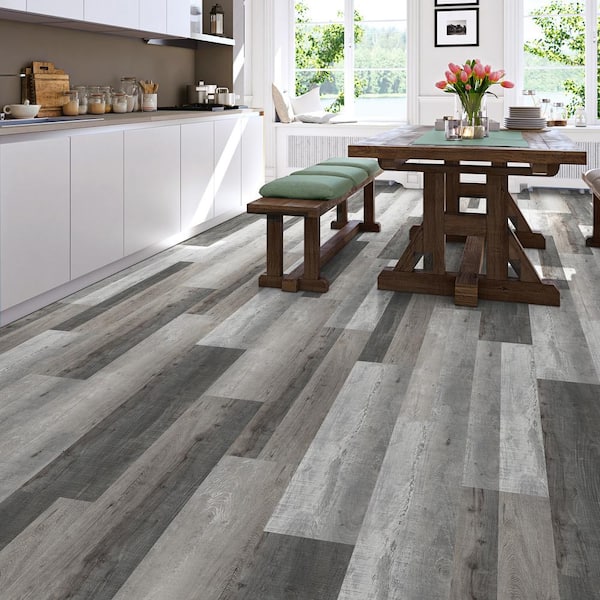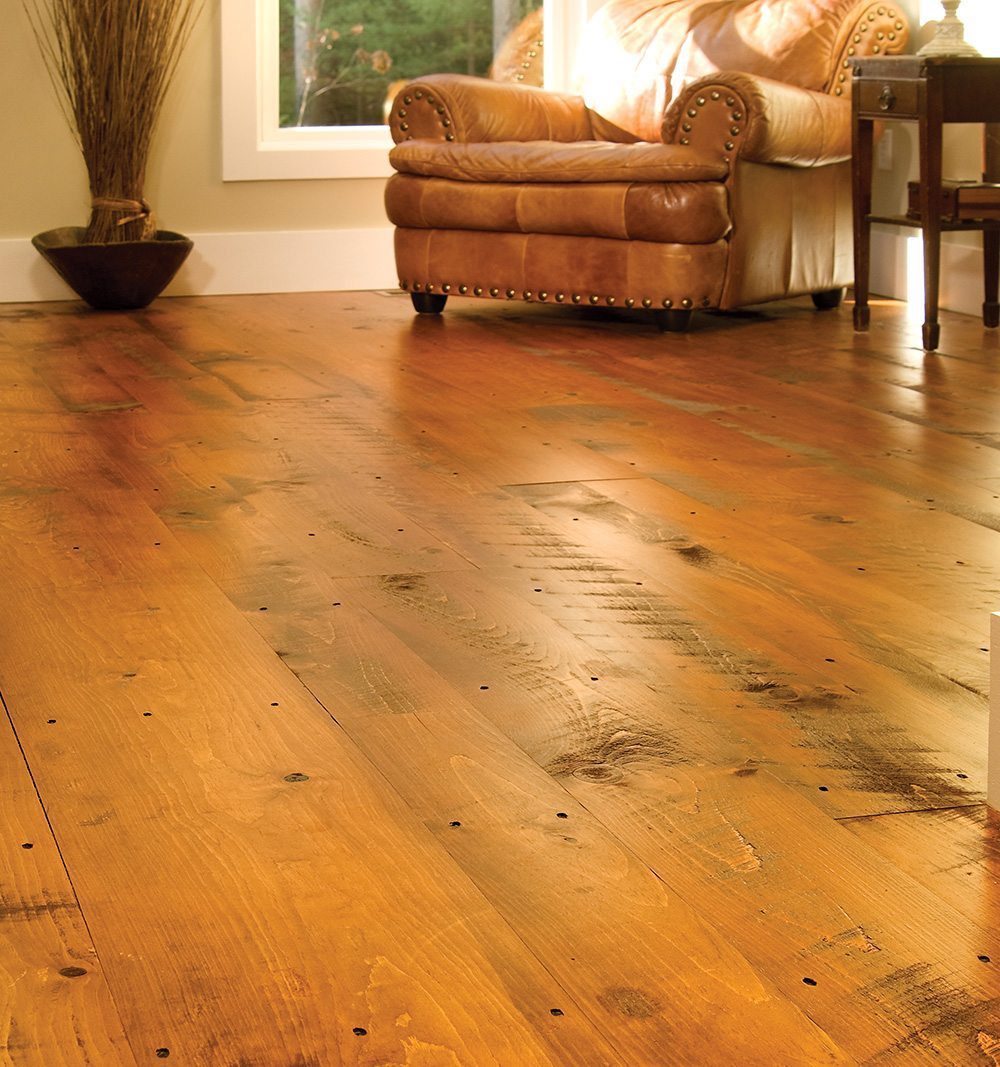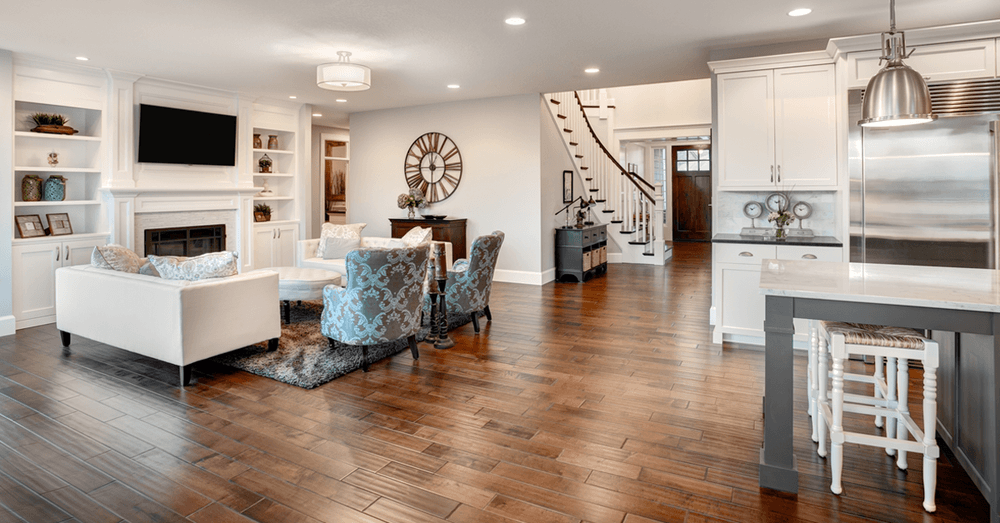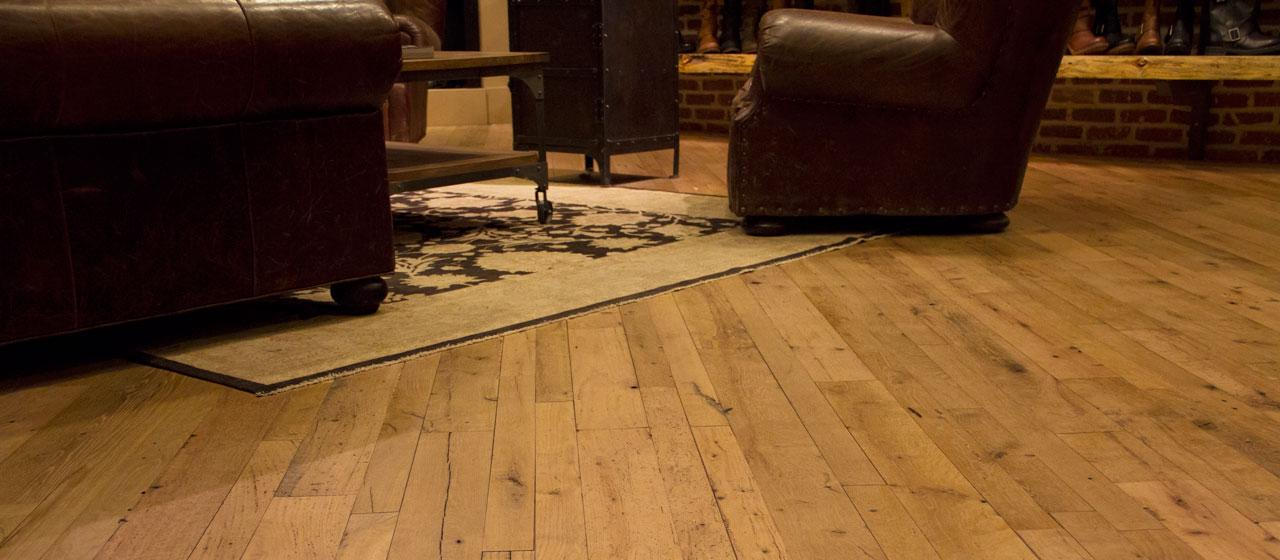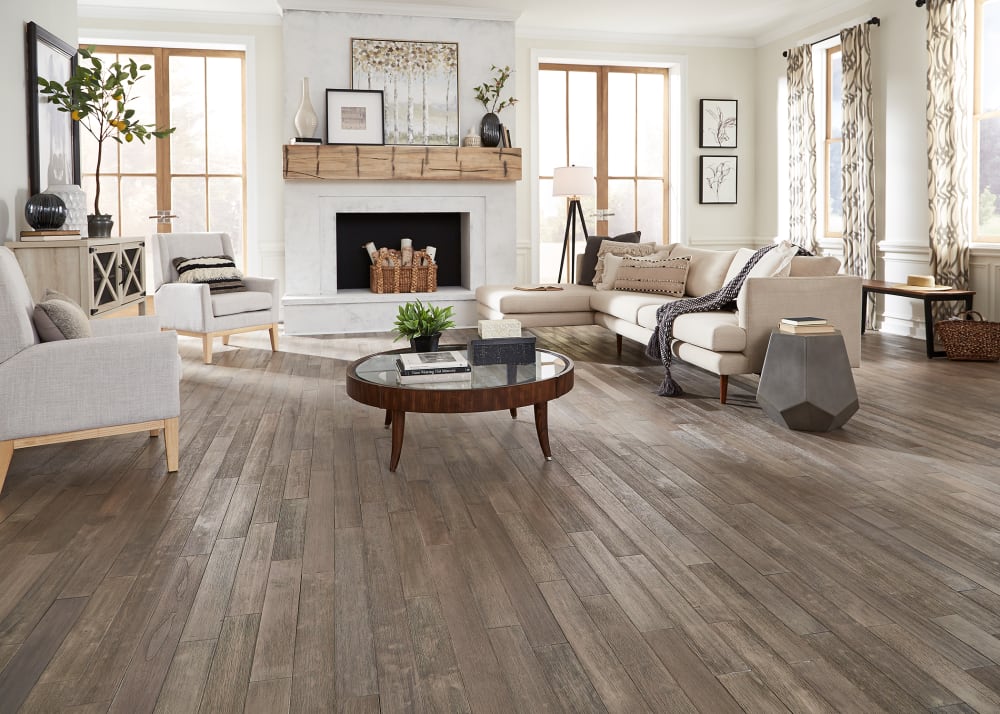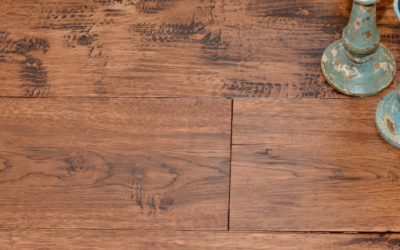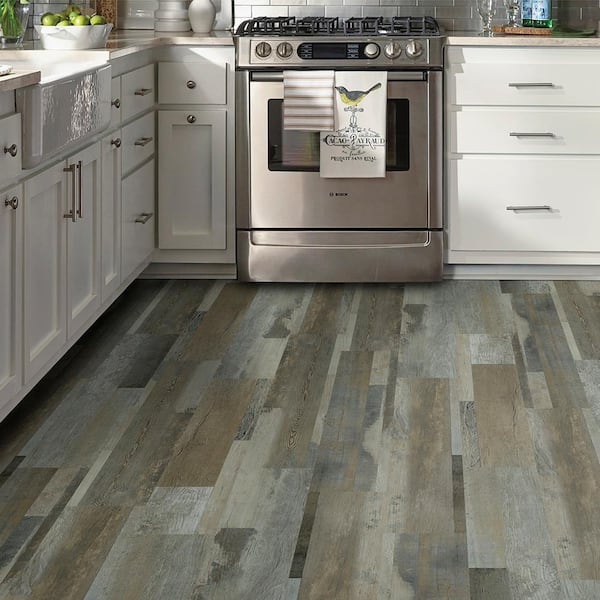Adding Character and Charm with Distressed Wood Flooring
Distressed wood flooring is a popular choice for homeowners looking to add character and charm to their living spaces. The intentional aging and weathering of the wood create a unique, rustic appearance that brings warmth and personality to any room. In this article, we’ll explore the different styles of distressed wood flooring, its benefits, the installation process, and how to care for it to keep it looking its best.
Styles of Distressed Wood Flooring
- Hand-Scraped: Hand-scraped wood flooring is characterized by its uneven, hand-crafted texture that mimics the appearance of old, worn boards. Each plank is individually scraped and beveled to create a one-of-a-kind look. This style adds a sense of history and authenticity to your space, making it feel cozy and inviting.
- Wire-Brushed: Wire-brushed wood flooring features a subtle, textured surface created by brushing the wood with stiff wire bristles. This process removes the softwood and accentuates the natural grain patterns, giving the floor a weathered and rustic appearance. Wire-brushed floors are perfect for those seeking a more understated, yet stylish, distressed look.
- Reclaimed Wood: Reclaimed wood flooring is made from old wood salvaged from barns, factories, and other historic structures. Each plank carries a unique history, with natural patinas, nail holes, and saw marks that add to its charm. Reclaimed wood floors are an eco-friendly option that brings a sense of authenticity and character to your home.
- Distressed Finishes: Distressed finishes are applied to new wood floors to create an aged and worn look. Techniques such as staining, sanding, and adding dents or scratches are used to mimic the appearance of old, weathered wood. These floors offer the best of both worlds: the durability and stability of new wood combined with the timeless beauty of aged wood.
- Antique Wood: Antique wood flooring is made from old-growth timber that has been preserved for decades or even centuries. This type of wood has a unique patina and character that can’t be replicated with modern materials. Antique wood floors bring a sense of history and elegance to your home, making them a prized addition to any room.
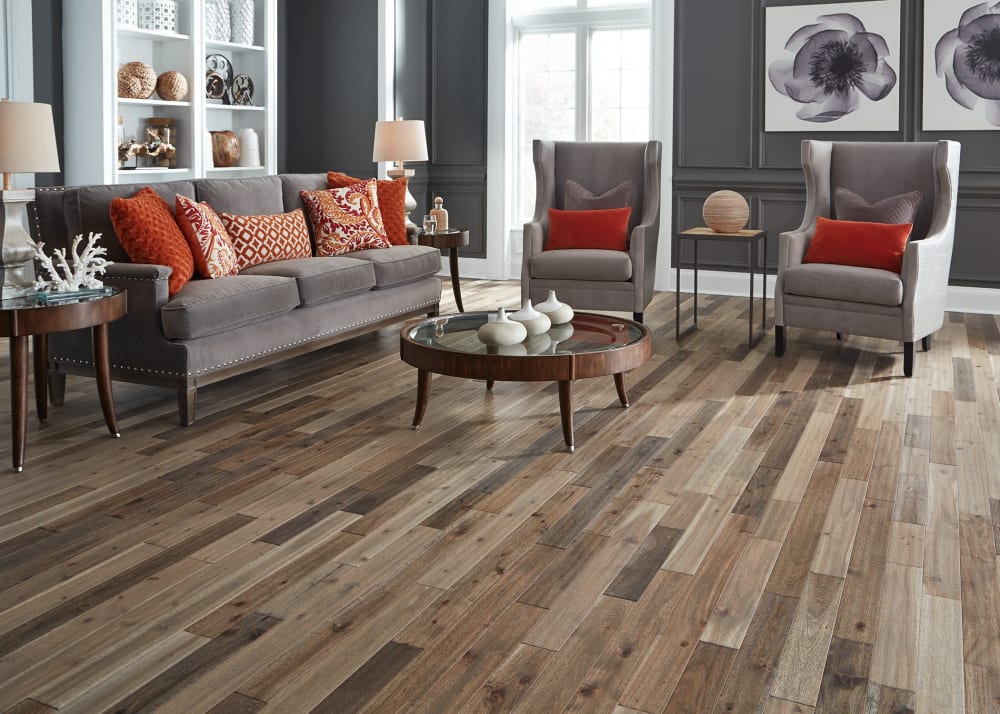
Benefits of Distressed Wood Flooring
Unique Aesthetic: One of the primary benefits of distressed wood flooring is its unique aesthetic. Each plank tells a story, with its own imperfections, textures, and colors. This individuality adds character and charm to your space, creating a warm and inviting atmosphere that can’t be achieved with uniform, mass-produced flooring.
Durability: Distressed wood floors are inherently durable due to their construction and finish. The distressing process often involves adding protective layers that enhance the wood’s resistance to wear and tear. Additionally, any future scratches or dents will blend seamlessly with the existing texture, making the floor look even more authentic over time.
Versatility: Distressed wood flooring is incredibly versatile and can complement a wide range of interior design styles. Whether your home is rustic, modern, industrial, or traditional, distressed wood floors can enhance the overall aesthetic. The variety of styles and finishes available allows you to find the perfect match for your decor.
Low Maintenance: The rugged appearance of distressed wood floors makes them relatively low maintenance. Unlike smooth, polished floors that show every scratch and scuff, distressed floors hide imperfections well. Regular sweeping and occasional mopping are usually sufficient to keep them looking their best, making them a practical choice for busy households.
Eco-Friendly Option: Reclaimed and antique wood flooring options are environmentally friendly choices. By repurposing old wood, you reduce the demand for new timber and help conserve natural resources. This sustainable approach not only benefits the environment but also adds a unique, storied element to your home.
Installation Process of Distressed Wood Flooring
Preparation: Before installing distressed wood flooring, it’s crucial to prepare the subfloor properly. Ensure the subfloor is clean, dry, and level. Any imperfections or moisture issues should be addressed to prevent problems with the new flooring. Acclimate the wood planks to the room’s temperature and humidity levels for at least 48 hours before installation.
Layout and Planning: Plan the layout of the distressed wood flooring to achieve a balanced and visually appealing result. Consider the direction of the wood grain and the flow of the room. Stagger the seams of the planks to create a natural, random pattern. Use spacers to maintain consistent gaps between the planks for expansion and contraction.
Installation Methods: There are several methods for installing distressed wood flooring, including nail-down, glue-down, and floating. The choice of method depends on the type of wood and subfloor. Nail-down installation involves nailing the planks to a wooden subfloor, while glue-down involves adhering the planks with a strong adhesive. Floating installation involves interlocking the planks over an underlayment without attaching them to the subfloor.
Cutting and Fitting: Cut the distressed wood planks to fit around obstacles and edges using a saw or a wood flooring cutter. Make precise cuts to ensure a clean and snug fit. Pay attention to the grain direction and texture of the wood to achieve a cohesive and natural look. Secure the planks according to the chosen installation method.
Finishing Touches: Once the distressed wood flooring is installed, add finishing touches to complete the look. Install baseboards or molding to cover the expansion gaps and create a polished finish. Inspect the floor for any loose planks or gaps and make necessary adjustments. Allow the floor to settle and acclimate to the room’s conditions before moving furniture back in.
Caring for Distressed Wood Flooring
Regular Cleaning: To keep your distressed wood flooring looking its best, establish a regular cleaning routine. Sweep or vacuum the floor regularly to remove dust and debris. Use a damp mop with a gentle wood floor cleaner to maintain the surface. Avoid using excessive water or harsh chemicals that can damage the wood.
Protective Measures: Protect your distressed wood flooring from scratches and dents by placing mats or rugs in high-traffic areas and under heavy furniture. Use felt pads or coasters under furniture legs to prevent scratches when moving items. Trim your pets’ nails regularly to avoid damage from claws.
Addressing Spills and Stains: In case of spills or stains, it’s important to address them promptly. Wipe up any spills immediately using a clean cloth or paper towel. For stubborn stains, use a wood floor cleaner or a mixture of mild soap and water. Gently scrub the stained area with a soft brush and rinse thoroughly.
Periodic Inspections: Regularly inspect your distressed wood flooring for any signs of wear, damage, or loose planks. Address any issues promptly to maintain the integrity and appearance of the floor. Periodic inspections will help you identify potential problems before they become more significant issues.
Refinishing and Repairs: Over time, your distressed wood flooring may show signs of wear and tear. Consider refinishing the floor to restore its original beauty. Sanding and refinishing can remove scratches and dents, giving your floor a fresh, new look. For deeper damage, consult a professional for repairs to ensure the best results.
Why Do You Need Distressed Hardwood Flooring? BuildDirect® Blog
Distressed Hardwood Flooring: 9 Design Ideas with a Cozy
Virginia Mill Works 3/4 in. Misty Point Distressed Solid Hardwood
Wide Plank Distressed Wood Flooring Wide Plank Floor Supply
TrafficMaster Grey Distressed Wood Multi-Width Look 6 in. x 36 in
Related Posts:

